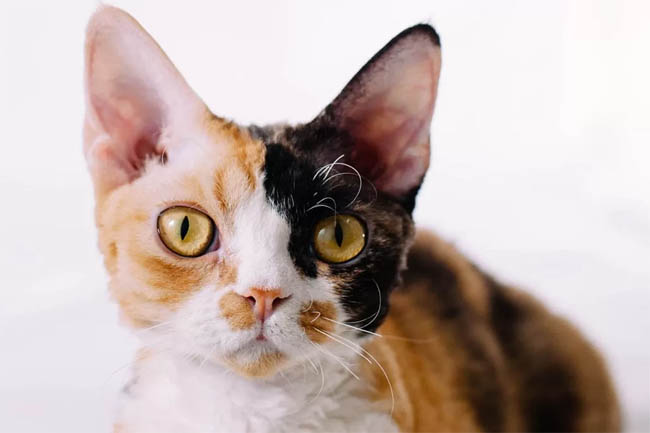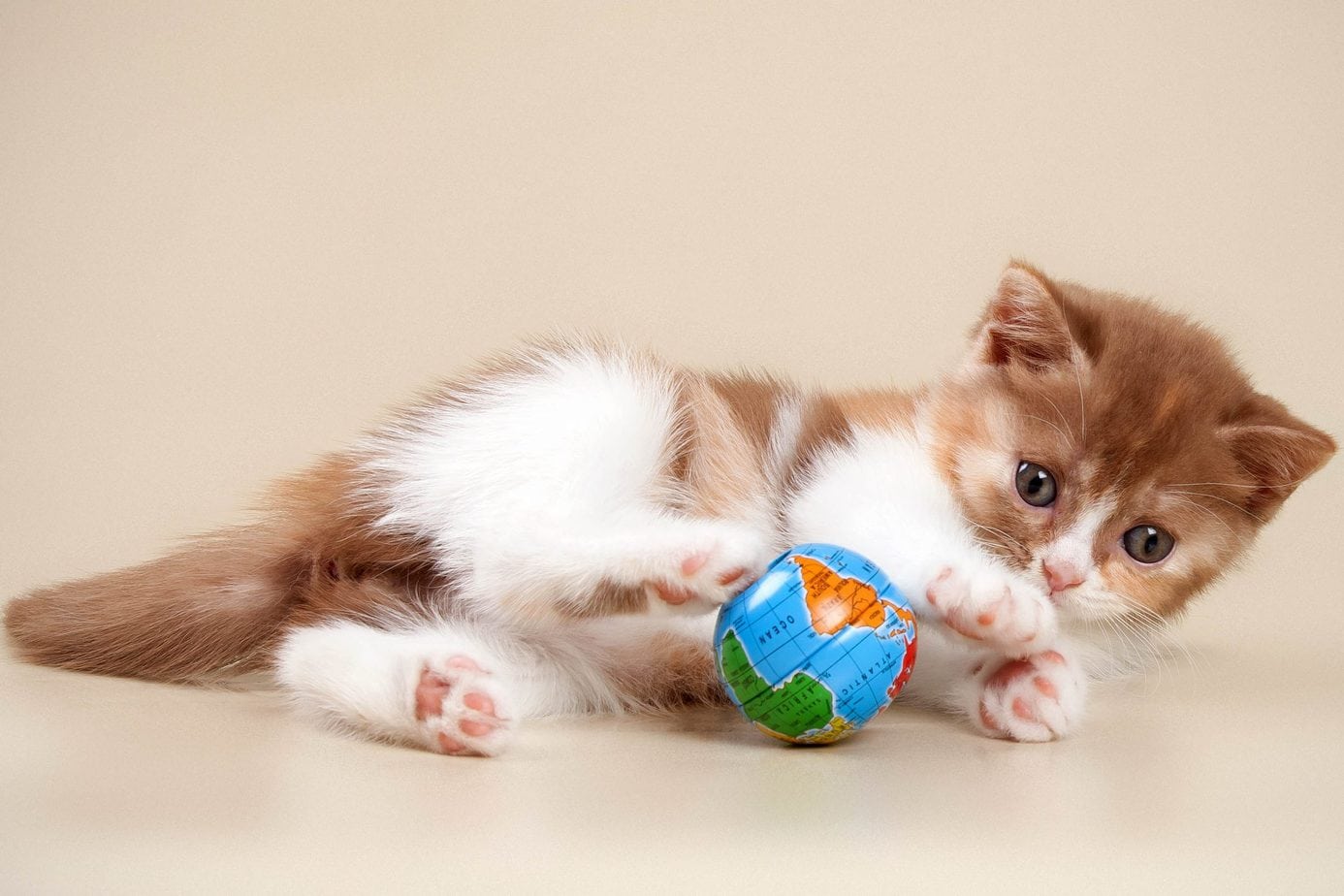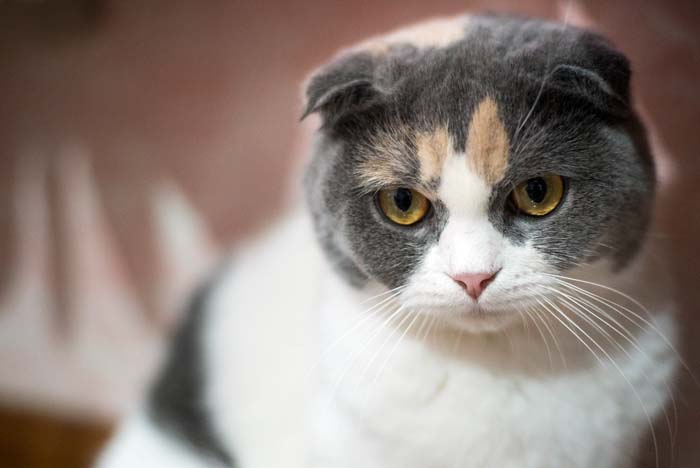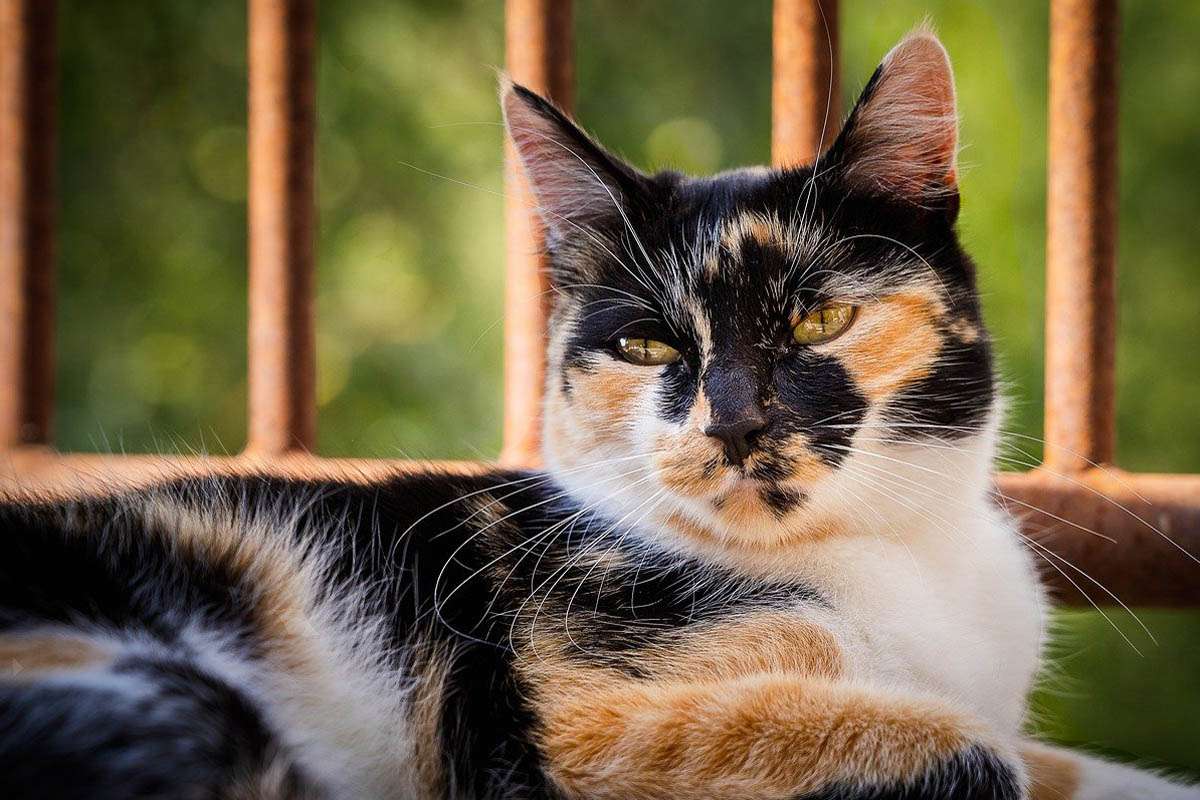Calico cat colours
Coat coats contain two pigments, phaeomelanin (red pigment) and eumelanin (black or brown pigment), these can further be split into colours depending on the shape of the pigment (round or oval) or the number and distribution of pigment granules.
- Black based: Black, brown (chocolate), cinnamon.
- Red based: Red (ginger). The recessive dilute gene, dilutes these primary colours making them appear paler. All calico cats inherit one copy of the orange gene and therefore will display red or cream if they carry dilution.
The photo below shows phaeomelanin (red pigment) and eumelanin (black or brown pigment) side by side on a caliby cat.

Genetic codes
Genes represented with an UPPERCASE letter are dominant, and the cat only needs to inherit one copy of the gene, lowercase letters are recessive, and the cat must inherit two copies for the trait to show.
- B: Black
- O: Orange
- bb: Chocolate
- bl: Cinnamon
- dd: Dilute
| Dense | Dilute |
| Black (B-) |
Blue (B-/dd) |
| Chocolate (bb) |
Lilac (bb/dd) |
| Cinnamon (bl/bl) |
Fawn (blbl/dd) |
| Red (O-) |
Cream (O-/dd) |
What is a calico cat?
Also known as a tri-colour, calico is a combination of two colours, plus white (which is not a colour, but an absence of colour). This striking coat combination occurs almost exclusively in female cats.
Dense calico colours
Black, red and white
This is by far the most common calico colour which consists of solid patches of black, red tabby (red is always tabby), and white.

Chocolate, red and white
Chocolate is a variant of black due to a mutation of the tyrosinase-related protein-1 (TYRP1) which replaces the spherical black pigment granules with oval granules resulting in a rich chocolate colour.

Cinnamon and red

Cinnamon is a variation of brown, caused by a second recessive mutation of the tyrosinase–related protein–1, (TYRP1) which causes a further elongation of the pigment granule, resulting in a light, warm brown colour. This unusual coat colour is seen almost exclusively in purebred cats.
Dilute calico colours
Dilution is caused by a single base deletion 1 bp in the melanophilin (MLPH) gene. This gene provides instructions for making melanophilin, a carrier protein that is found in pigment-producing melanocytes. Melanophilin is essential for the even distribution, transport, and translocation of melanin (pigment granules). Menalocytes are specialised cells that contain organelles known as melanosomes. Melanosomes synthesise, store and transport melanin out of the cell via the dendrites to neighbouring keratinocytes (keratin producing cells).
Blue and cream

Dilute grey calico is a combination of grey (blue), cream and white which is the result of the dilute gene which alters the coat colour from black and red to grey and cream.
Lilac and cream
Lilac is the recessive form of chocolate and red which changes the colour from brown and red to lilac and cream.

Fawn and cream

Fawn is the dilute of cinnamon, along with cream makes this extremely rare calico coat colour.
When is a calico not a calico?
Calico always three elements, white, red or cream and one solid colour (black, grey or chocolate). If the non-red colour is also tabby, the cat is a caliby, not a calico.

Frequently asked questions
Is my cat tortoiseshell or calico?

The tortoiseshell coat colour/pattern consists of patches of two colours, black and red, grey and cream or brown and red. Calico cats always have white, in addition to the two colours (black and red, grey and cream or brown and red).
Can calico cats have two colours?
Top be pedantic, calico cats only have two colours as white is not considered a colour, however, the calico coat pattern is commonly referred to as tri-colour which includes white. Tortoiseshell cats can only have two colours, and there is never any white in their coat.
Are calico cats always female?
Calico cats are almost always female, with a few rare exceptions. That is because orange (red) is carried on the X chromosome. Female cats have two X chromosomes while male cats only have one.
If the female inherits one copy of the O gene, and one copy of non-orange (black or chocolate), she will be calico (with the addition of white) or tortoiseshell, if however, she inherits two copies of the O gene, she will be orange and white. The male can only inherit one copy of the O gene, and therefore will be orange (and white) as the O gene overrides black-based genes.
Are calico cats rare?
The calico coat colour/pattern is not rare, but it is less common than other coat colours and patterns.
Feature image: loicp90, Pixabay

